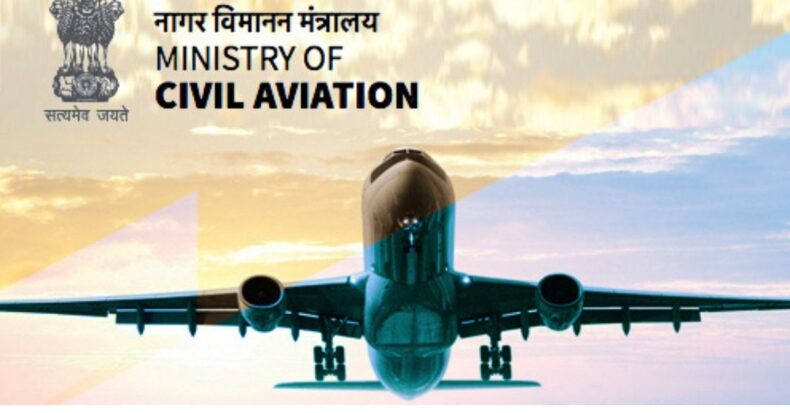The Government of Indian Ministry of Civil Aviation is the nodal Ministry in charge of formulating national policies and programs for the development and regulation of civil aviation and developing and implementing plans for the orderly growth and extension of civil air transport.
Its responsibilities also include supervising airport buildings, air traffic services, and air passenger and cargo transportation.
The Civil Aviation Ministry is also responsible for administering the Aircraft Act of 1934, the Aircraft Rules of 1937, and the Commission of Railways Safety.
Composition of the Ministry
The Ministry is under the Honorable Minister Shri Jyotiraditya Scindia and the Honorable Minister of State Ms. V.K. Singh.
The Secretary, an IAS official, is the administrative head of the Ministry and is assisted by an Additional Secretary and Financial Advisor, three Joint Secretaries, seven officers at the Director/Deputy Secretary/Financial Controller level and ten officials at the Deputy Secretary level and located at Rajiv Gandhi Bhavan, Safdarjung Airport, New Delhi.
Directorate General of Civil Aviation (India)
The Directorate-General for Civil Aviation DGCA is a statutory agency that regulates civil aviation in India.
The DGCA is responsible for investigating aviation accidents and incidents, maintaining all aviation rules, and issuing aviation licenses such as PPLs, SPLs, and CPLs in India.
It was established under the Aircraft (Amendment) Bill, 2020. Its headquarters are located on Sri Aurobindo Marg in New Delhi, directly across from Safdarjung Airport.
The Indian Government intends to replace the organization with a Civil Aviation Authority (CAA) modeled after the Federal Aviation Administration of the United States (FAA).
Airports Authority of India
Airport Authority of India or AAI is a legal entity under the Directorate General of Civil Aviation, Ministry of Civil Aviation, Government of India.
He is responsible for the creation, renewal, maintenance, and management of the civil aviation infrastructure in India.
Provides navigational communication/air traffic management (CNS/ATM) surveillance services in Indian airspace and adjacent sea areas.
AAI currently operates 137 airports, including 23 international airports, ten customs airports, 81 domestic airports, and 23 civil enclaves at defense airports.
AAI also has ground installations in all airports and 25 other locations to ensure the safety of aircraft operations.
AAI covers all major air routes in the Indian subcontinent via 29 radar installations at 11 locations and 700 VOR/DVOR installations with Distance Measuring Equipment (DME).
Fifty-two runways equipped with an instrument landing system & # 40; ILS) structures with night landing facilities at most of these airports and automated message forwarding methods at 15 airports.
History of Airports Authority of India (AAI)
Indian Government established the International Airports Authority of India in 1972 to manage national, international airports, while the National Airports Authority of India (NAAI) was formed in 1986 to manage domestic airports.
The organizations were merged in April 1995 by an act of Parliament, i.e., the Airports Authority of India Act, 1994, and were formed as legal entities and named the Airports Authority of India (AAI).
This new organization is responsible for creating, updating, maintaining, and managing civil aviation infrastructure on the ground and in the country’s airspace.
Major ongoing projects
AAI implementation of automatic dependency monitoring system & # 40; ADSS’ in the air traffic control hubs of Calcutta and Chennai, making India the first country to use this technology in the Southeast Asia region, enabling air traffic control over sea areas using satellite communication modes.
Performance-Based Navigation (PBN) procedures are being implemented at Mumbai, Delhi, and Ahmedabad airports.
AAI implemented the GAGAN project in technological collaboration with the Indian Space Research Organization (ISRO).
The navigation signal received by the GPS will be enhanced to meet the navigation needs of the aircraft. February 2008. In February 2008, The first phase of the technology demonstration system was completed.













